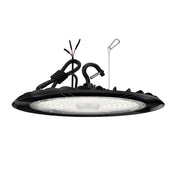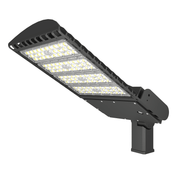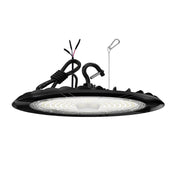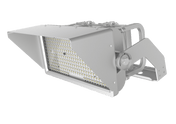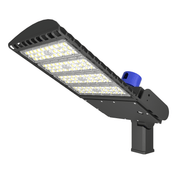Introduction
There are more than 300 million streetlights worldwide and the number is still increasing, but despite the obvious technical and economic advantages of LED lamps, most of them still need to be replaced. Although official requirements vary around the world, the main principles of good street lighting are the same: high-quality lighting ensures clear visibility and road safety. Whether it is a small sidewalk, a high-speed multi-lane highway, a pedestrian crossing or a tunnel, there are many ways to illuminate them correctly.
Table of Contents
1. What is Street Lighting?
2. Applications of LED Street Lighting Fixtures?
3. What types of LED Street Lights are available on the market?
4. Urban road lighting design standards?
5. Selection of light sources, lamps, and accessories?

LED streetlights are a type of lamp that consists of light-emitting diodes (LEDs). These LED-equipped lighting elements are usually mounted on top of light poles and are used to illuminate sidewalks, roads, parking lots, and other outside areas such as shipyards. These infrastructure construction units help ensure safety in the area where they are installed. Based on their application, some manufacturers refer to LED street lights as LED road lighting fixtures.
Street lighting refers to the illumination of public roads, streets, and other outdoor areas during the night. It involves the installation of lighting fixtures, such as streetlights or lamps, along the sides of roads and in public spaces to provide visibility and safety for pedestrians, drivers, and cyclists. Street lighting helps to improve visibility, reduce accidents, deter crime, and create a sense of security in urban and suburban areas. It also enhances the aesthetics of the surroundings and allows for better navigation and orientation during nighttime hours. Street lighting systems are typically designed to provide uniform and adequate lighting levels while minimizing energy consumption and light pollution.
The main component of the city lighting project is street lighting. The lighting of street lights is especially significant at night. Currently, traditional street lighting is being phased out in favor of LED street lights. Because of its great luminous efficiency, long life, low energy consumption, and ease of installation, LED street lights are widely employed.
Different types of street lights can be applied in a variety of situations depending on their appearance, installation method, wattage, and beam angle. These applications include main streets, residential streets, road intersections, plazas, parks, outdoor industrial and logistics areas, etc. Nowadays, LED street lights are becoming more and more fashionable, and high-energy-saving LED lamps are designed to replace traditional HPS and MH lamps. We believe that when designing a successful street light, you need to pay attention to the aesthetics, wattage, light efficiency, light distribution, street lighting certification CCT/CRI, etc.
When your street light is perfect in several aspects, it competes with the project which it can win, and the different installation methods make its application range very wide. In recent years, with the maturity of LED technology, photocells, and sensors are increasingly applied to LED streetlights to achieve energy-saving and semi-intelligent functions. LED street lights with smart controllers can make your roads, squares, and parks very advanced, and it will also make your city very modern.
LED street lamps have many application advantages and good energy-saving effects. Affected by policy-driven factors, it is expected that the global LED street lamp market will usher in a peak period in 2025. In the future, municipal orders for LED street lamps will grow rapidly, and the market share will gradually increase, ultimately achieving sustainable development.
2. Applications of LED Street Lighting Fixtures?
LED streetlights are well known for their wide range of applications. Here are a few examples:
Street Lighting
There are various types of streets in both rural and urban areas, such as main streets, secondary streets, etc. Different street lighting situations require different types of street lights, different wattages, and different light distributions. With the advancement of technology, LED streetlights are a cost-effective and sustainable choice for roads and trails in cities, towns, and rural areas.
Highway Lighting
Highways are roads that connect cities to cities and cities to villages. In this case, there are no non-motorized lanes for motor vehicles and pedestrians. In addition, the road surface of highways is very flat, there are no obvious potholes, the road conditions are well maintained, and the safety factor is high. Therefore, most highways do not need to install street lights. At the same time, considering the high cost, highways are not suitable for installing street lights.
In the following special situations, such as highway entrances and exits, highway bridges, roundabouts, etc., high-power street lights can be used to provide necessary lighting for drivers to drive safely. For roundabouts, we are likely to need to install floodlights instead of streetlights. The installation height of floodlights can reach 12-15m or higher.
Intersection Lighting
These types of street lights are usually used at road and street intersections so that drivers must make quick decisions when they find potential dangers. In this case, LED street lights should be placed at intervals to keep the light uniform and eliminate the driver's eye fatigue. If necessary, high pole lights can be set up at intersections to provide necessary lighting for drivers and pedestrians.
Square lighting
The square is an important part of people's lives. People spend more time dancing/chatting/playing in the square at night, so square lighting becomes very necessary. Square lighting usually uses LED area lights and LED floodlights, but many LED street light manufacturers have also developed lighting distribution methods suitable for square lighting to reduce costs and expand the diversity of product functions.
Parking lot lighting
With the development of the economy, cars have become the main means of transportation for the public. Some shopping malls, supermarkets, hospitals, etc. will have parking lots to provide convenience for people, and parking lot lighting has also emerged as a result. Good parking lot lighting can not only protect pedestrians but also leave a good impression and protect your business. LED street lights and column top lights provide bright, energy-saving lighting for parking lots of all sizes. Different parking lots also require lights with various mounting options, including straight arm pole mounting, adjustable slide rail mounting, wall mounting, etc.

Outdoor industrial and logistics area lighting
We know that any large warehouse logistics area will have a large space in front of the entrance to facilitate vehicle passage. Therefore, this large space needs to be illuminated at night to avoid dark areas, otherwise it may increase the driver's blind spot and increase potential risks. At the same time, the loading and unloading area also needs sufficient lighting to guide the driver and facilitate workers to load and unload goods.
Non-motor vehicle and sidewalk lighting
Mainly refers to roads for pedestrians and non-motor vehicles. Usually this type of lighting is combined with road lighting. When designing lighting, motor vehicle lanes, non-motor vehicle lanes, and sidewalks will be set according to engineering requirements. Usually, a lamp will be set to illuminate non-motor vehicle lanes and sidewalks. The purpose of setting up lighting for such roads is to provide pedestrians and consumers with safe and comfortable lighting conditions, so that pedestrians can walk safely, recognize each other's faces, correctly locate each other, and prevent criminal behavior.

3. What types of LED streetlights are available on the market?
The most common types of LED streetlights on the market today are street lamps, high pole lamps, and ordinary floodlights.
3.1 Street Lights-SL02
SLO2 series street light This product adopts a modular design, which is very conducive to the maintenance of the lamp. Since the light source and LED power supply are placed separately, the heat dissipation performance of the lamp is very good. Various wattages, 30W-400W, 160Lm/W high energy efficiency can save up to 80% of energy.

LED street lights - SL02 series street lights advantages
- High Light Efficiency can reach 140lm/W
- Beam angle: Type III
- Lightweight, helping cut the huge shipping cost
- High-cost performance
- Can be used as streetlights
- Suitable for Minor roads, Alleys, Pathways, Households
- ENEC certified streetlights
- Manufacturer with ISO9001 and ISO14001 certifications
- Functional, for side entry, pole top & Wall mount
Related Products

3.2 High Pole Lamps - SL03
SL02 series street lamps are characterized by high efficiency, professional lenses, and tool-free maintenance. They are a more professional and intelligent road lighting lamp. All products are made of the same material die-casting process and use different power supply systems to meet the needs of different areas. It adopts secondary optical lenses with anti-blue light and lighting uniformity as well as long life and professionalism to meet road lighting. Suitable for street, road, sidewalk, urban, and rural road lighting.
The streamlined design and smooth surface of this series of street lamps eliminate the influence of dust, dirt, and other factors on the performance of lamps. At the same time, the SL02 series street light LED is small in size and easy to transport, which greatly reduces the transportation cost. It is an ideal choice for many customers with high cost-effectiveness requirements.

LED street lights - SL03 series street lights advantages
- High Light Efficiency can reach 195lm/W
- Beam angle: T2, T3, T4
- Lightweight, helping cut the huge shipping cost
- 3-pin, 5-pin, 7-pin NEMA socket available for photocell & smart
- Tool-free opening
- Flip cover design for easy maintenance
- Ventilation device to protect the lamp from moisture
- Level bubble to ensure correct installation
- Power cut-off protector to ensure electrician safety
Related Products

3.3 Ultra-thin LED street light fixtures-SL04
LED Street Light-SL04 adopts a high-efficiency LED light source, with a maximum light efficiency of up to 170Lm/W. Compared with traditional street lights, it can save up to 70% of energy. It provides a high-brightness lighting effect, making the road brighter and improving the safety of night driving.
At the same time, LED Street Light-SL04 has good light uniformity, avoiding the light spot and dark area problems of traditional street lights. The integrated LED street light fixture is a cost-effective and durable certified solution suitable for various streets at night without standard electricity.

LED street lights - SL04 series street lights advantages
- High Light Efficiency can reach 170lm/W
- Beam angle: T2, T3, T4
- Tool-less access, Bubble tube, for easier installation
- Circuit switch to cut off power when opening, for better safety
- 3-pin, 5-pin, 7-pin NEMA socket available for photocell & smart controller
- Lightweight, helping cut the huge shipping cost
- Functional, for side entry, pole top & Wall mount
- Low wattage, customized color box packing optional
- CE, ROHS, and ETL listed
Related Products

4.Urban road lighting design standards?
4.1 Classification of road lighting
(1) According to the function of road use, urban road lighting can be divided into motor vehicle lane lighting, intersection area lighting and pedestrian sidewalk lighting.
(2) Motor vehicle lane lighting should be divided into three levels according to expressway, main road, secondary road and branch road.
(3) Pedestrian street lighting should be divided into four levels according to the size of traffic flow.
4.2 Evaluation indicators of urban road lighting
(1) The evaluation indicators of motor vehicle lane lighting should be the average brightness of the road surface or the average illumination of the road, the uniformity of the total brightness of the road surface and the longitudinal uniformity or the uniformity of the illumination of the road surface, the glare limit, the ambient ratio and the induction degree.
(2) The evaluation indicators of intersection area lighting should be the average illumination of the road surface, the uniformity of the illumination of the road surface and the glare limit.
(3) The evaluation indicators of sidewalk lighting and non-motor vehicle lane lighting should be the average illumination of the road surface, the minimum illumination of the road surface, the vertical illumination, the semi-cylindrical illumination and the glare limit.
4.3 Evaluation indicators of urban road lighting
(1) The standard values of lighting for motor vehicle lanes with continuous lighting shall comply with the provisions of Table 1.
(2) According to the average brightness coefficient in Appendix A of this standard, calculate the average illumination required on asphalt pavement and cement concrete pavement to obtain the average brightness of the pavement.
(3) When calculating the average brightness or average illumination of the pavement, the maintenance coefficient shall be determined in accordance with Article Table 2 of this standard.
Table 1 Standard values of motor vehicle lane lighting
|
Class |
Road type |
Road brightness |
Road illuminance |
Glare limit Threshold increment TI (%) Maximum initial value |
Environment ratio SR minimum |
|||
|
Average brightness Lav (cd/m2) maintenance value |
Total uniformity Uo minimum |
Longitudinal uniformity UL minimum |
Average illuminance Eh, av (lx) minimum maintenance value |
Uniformity UE minimum |
||||
|
Ⅰ |
Expressway,main road |
1.50/2.00 |
0.4 |
0.7 |
20/30 |
0.4 |
10 |
0.5 |
|
Ⅱ |
Secondary road |
1.00/1.50 |
0.4 |
0.5 |
15/20 |
0.4 |
10 |
0.5 |
|
Ⅲ |
Branch road |
0.50/0.75 |
0.4 |
_ |
8/10 |
0.3 |
15 |
_ |
Notes:
- The average illumination listed in the table is only applicable to asphalt pavement. If it is a cement concrete pavement, the average illumination value will be reduced by about 30%.
- The values in the table are only applicable to dry pavement.
- The table gives two standard values for the average brightness and average illumination of each level of the road. The left side of "/" is the low-level value, and the right side is the high-level value.
- Yingbin Road is the main road leading to large public buildings. It is located in the city center and commercial center and implements Class I standards.
When designing road lighting, it should be ensured that it has good induction.
The lighting standard value of roads of the same level should be determined according to the size of traffic flow, vehicle speed, and the degree of perfection of the traffic control system and road separation facilities. When the traffic volume is large or the vehicle speed is high, the high-end value in Table 1 of this standard should be selected; for roads with perfect traffic control systems and road separation facilities, the low-end value in Table 1 of this standard should be selected.
Auxiliary roads of expressways and main roads that are only for motor vehicles or mixed with non-motor vehicles should have the same lighting level as adjacent main roads; auxiliary roads that are only for non-motor vehicles should meet the standards of Article Table 4 of this standard.
4 .4 Intersection area lighting standard values
The intersection area lighting standard values shall comply with the provisions of Table.1.
Table 1 Standard lighting values for intersection areas
|
intersection area type |
Average illuminance of road surface Eh, av (lx), maintain value |
Illumination uniformity UE |
Glare limit |
|
The intersection of main road and main road |
20/30 |
0.4 |
In the azimuth Angle of the luminaire viewed by the driver, the light intensity of the luminaire should not exceed 10cd/1000lm and 30cd/1000lm in the direction of 90° and 80° height angles respectively |
|
The intersection of the main road and secondary road |
|||
|
The intersection of the main road and Branch Road |
|||
|
The intersection of secondary road and secondary road |
20/30 |
||
|
The intersection of secondary road and Branch Road |
|||
|
The intersection of Branch Road and Branch Road |
15/20 |
Notes:
- The height angle of the lamp is measured in the on-site installation posture.
2 The table gives two standard values of average road surface illumination for each type of road intersection. The left side of "/" is the low illumination value, and the right side is the high illumination value.
When there is a low illumination value on the intersection road, the corresponding intersection area should select the low illumination value in Table 1 of this standard, otherwise the high illumination value should be selected.
4.5 Standard values for pedestrian and non-motorized roadway lighting
The standard values of roadway lighting mainly for pedestrians and non-motorized vehicles shall comply with the requirements of Table 1, and the glare limits shall comply with the requirements of Table 2.
Table 1 Standard values for pedestrian and non-motorized roadway lighting
|
Class |
Road type |
Average road illuminance Eh,av(lx),maintained value |
Minimum road illumination Eh,min(lx) maintenance value |
Minimum vertical illuminance Ev, min (lx) maintenance value |
Minimum semi-cylindrical illuminance Esc, min (lx) maintenance value |
|
1 |
Commercial pedestrian streets; roads with heavy pedestrian traffic in the city center or commercial districts; roads in and outside residential areas that are used by both motor vehicles and pedestrians and are connected to urban motor vehicle roads |
15 |
3 |
5 |
3 |
|
2 |
Higher traffic roads |
10 |
2 |
3 |
2 |
|
3 |
Medium traffic roads |
7.5 |
1.5 |
2.5 |
1.5 |
|
4 |
Roads with less traffic |
5 |
1 |
1.5 |
1 |
Note: The calculation point or measurement point of the minimum vertical illuminance and semi-cylindrical illuminance is located on the center line of the road at a height of 1.5m from the road surface. The minimum vertical illuminance needs to be calculated or measured in two directions on the plane passing through this point and perpendicular to the road axis.
Table 2 Glare limits for pedestrian and non-motorized vehicle lane lighting
|
Class |
Maximum light intensity Imax (cd/1000lm) |
|||
|
≥70° |
≥80° |
≥90° |
≥95° |
|
|
1 |
500 |
100 |
10 |
<1 |
|
2 |
- |
100 |
20 |
- |
|
3 |
- |
150 |
30 |
- |
|
4 |
- |
200 |
50 |
- |
Note: The luminous intensity given in the table is the luminous intensity in any direction within the specified angle formed with the downward vertical axis of the lamp after the lamp is installed.
Non-motorized vehicle lane lighting installed on one or both sides of the motor vehicle lane and not physically separated from the motor vehicle lane shall comply with the motor vehicle lane lighting standards; the average illumination of non-motorized vehicle lanes physically separated from the motor vehicle lanes shall be 1/2 of the illumination value of the adjacent motor vehicle lane, but shall not be lower than the illumination of the adjacent sidewalk (if any).
For pedestrian lighting installed on one or both sides of the motor vehicle lane, when the sidewalk and non-motorized vehicle lanes are mixed, the sidewalk lighting standards shall be adopted and the environmental matching requirements for motor vehicle lane lighting shall be met. When the sidewalk is separated from the non-motorized vehicle lane, the average illumination of the sidewalk shall be 1/2 of the adjacent non-motorized vehicle lane. At the same time, the sidewalk lighting shall also comply with the provisions of Article 1 of this standard. When the standard values determined according to the two requirements are inconsistent, the higher standard value shall be selected.
5.Selection of light sources, lamps and accessories
5.1 Light source selection
The selection of light sources shall meet the following requirements:
1. High-pressure sodium lamps are suitable for expressways and main roads, and light-emitting diode lamps or ceramic metal halide lamps can also be used.
2. High-pressure sodium lamps, light-emitting diode lamps, or ceramic metal halide lamps can be used for secondary main circuits and branch circuits.
3. Light-emitting diode lamps or metal halide lamps should be used for mixed traffic roads of motor vehicles and pedestrians in residential areas.
4. Light-emitting diode lamps or metal halide lamps can be used for motor vehicle traffic roads with high color recognition requirements in downtown areas and commercial centers.
5. Light-emitting diode lamps, low-power metal halide lamps, or thin tube fluorescent lamps, compact fluorescent lamps can be used for pedestrian streets in commercial areas, pedestrian roads in residential areas, sidewalks on both sides of motor vehicle traffic roads, or non-motor vehicle lanes.
5.2 High-pressure mercury lamps and incandescent lamps should not be used for road lighting.
5.3 When using light-emitting diode (LED) light sources, the following requirements shall be met:
1. The color rendering index (Ra) of the light source shall not be less than 60.
2. The correlated color temperature of the light source should not be higher than 5000K, and medium and low color temperature light sources should be preferred.
3. The chromaticity tolerance of the same type of light source shall not be greater than 7SDCM.
4. In the CIE1976 uniform chromaticity scale diagram specified in the current national standard "Uniform Color Space and Color Difference Formula" GB/T 7921, the deviation of the chromaticity coordinates of the light source from the initial value during its life cycle shall not be greater than 0.012.
5.4 Selection of lamps and accessories
Functional lamps must be used for motor vehicle lane lighting, and the photometric parameters of the lamps should be selected according to the lighting level, road form, and road width.
Lamps that require separate lighting for commercial pedestrian streets, sidewalks, pedestrian underpasses, pedestrian bridges, and non-motorized lanes and sidewalks on both sides of motor vehicle traffic roads should be coordinated with the road environment and have both functionality and decorativeness, provided that the lighting standard values are met. When decorative lamps are used, their upward luminous flux ratio should not be greater than 25%, their glare control value should meet the relevant requirements of this standard, and their mechanical strength should comply with the current national standards "Luminaires Part 1: General Requirements and Tests" GB7000.1 and "Luminaires Part 2-3: Special Requirements for Road and LED Street Lights" GB 7000.203.
When using high pole lighting, floodlights or cutoff lamps with appropriate power and light distribution should be selected according to the characteristics of the site.
For enclosed road lighting fixtures equipped with high-intensity gas discharge lamps, the protection level of the light source cavity shall not be lower than IP54. For places where roads and the environment are severely polluted and maintenance is difficult, the protection level of the light source cavity shall not be lower than IP65. The protection level of the lamp electrical cavity shall not be lower than IP43.
In areas or places where the content of corrosive gases such as acids and alkalis in the air is high, lamps with good corrosion resistance should be selected.
In places where strong vibrations are easily generated, such as large bridges where motor vehicles pass, the lamps used shall comply with the vibration protection requirements specified in the current national standards "Luminaires Part 1: General Requirements and Tests" GB 7000.1 and "Luminaires Part 2-3: Special Requirements "Roads and Optimal Streetlights" GB 7000.203", and anti-fall devices shall be installed.
High-intensity gas discharge lamps should be equipped with energy-saving inductive ballasts, and light sources with lower power can be equipped with electronic ballasts.
The installation distance between the trigger, ballast and light source of the high-intensity gas discharge lamp shall comply with the requirements of the current national product standards.
The maintenance factor of outdoor LED street lights can be determined according to Table 1.
Table 1 Maintenance coefficient of road lighting fixtures
|
Luminaire protection level |
Maintenance Factors |
|
≥IP65 |
0.70 |
|
<IP65 |
0.65 |
Table 2 When the lamp uses LED light source, it shall meet the following requirements:
The power factor of the lamp shall not be less than 0.9.
The efficiency of the lamp shall not be less than the requirements of Table 2.
|
Color temperature Tc(K) |
TC≤3000K |
3000K<TC≤4000K |
4000K<TC≤5000K |
|
Lamp performance limit (lm/W) |
90 |
95 |
100 |
Under the nominal working condition, the luminaire shall be continuously lit for 3000 hours, and the luminous flux maintenance rate of the light source shall be not less than 96%. The luminaire shall be continuously lit for 6000 hours, and the luminous flux maintenance rate of the light source shall be not less than 92%.
The power module of the luminaire shall comply with the provisions of the current national standard "Control devices of luminaires Part 14: Special requirements for DC or AC electronic control devices for LED modules" GB19510.14, and can be replaced on site. The protection level should not be reduced.
The radio disturbance characteristics of the luminaire shall comply with the requirements of the current national standard "Limits and measurement methods of radio disturbance characteristics of electrical lighting and similar equipment" GB 17743, the harmonic current limit shall comply with the requirements of the current national standard "Electromagnetic compatibility limit harmonic current emission limit (equipment input current per phase ≤16A)" GB 17625.1, and the electromagnetic compatibility immunity shall comply with the requirements of the current national standard "Electromagnetic compatibility immunity requirements for general lighting equipment" GB/T 18595;
The protection level of the luminaire shall not be lower than IP65.
conclusion
LED street lights are a new type of lighting tool that can emit light in a directional manner, have good energy-saving effects, long service life, high color rendering index, high power-saving efficiency, good driving performance, and strong earthquake resistance. LED street lights have become a new generation of energy-saving light sources and the best choice for energy-saving transformation of urban lighting. They can effectively replace traditional high-pressure sodium lamps. In the future, people will continue to study LED street lights, adopt scientific and technological means, improve the application level of LED street lights, and effectively improve people's lives.


